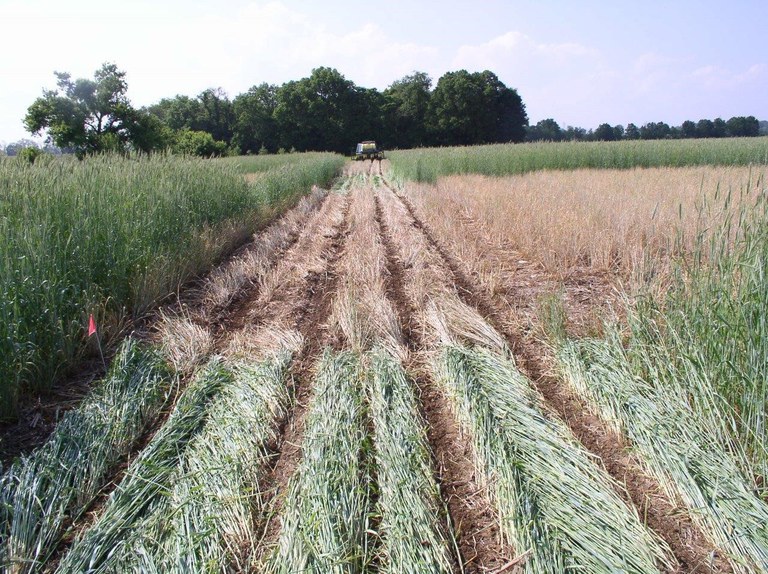Posted: February 10, 2017
Could “planting green” be the preferred tool in the soil health tool box, one that brings multiple conservation and management benefits to producers without negatively impacting yield? An interdisciplinary team of Penn State College of Agricultural Sciences researchers is exploring the answers to this question.
Planting green is a relatively new practice that consists of waiting to kill cover crops until the day of planting, or within a few days after planting, instead of killing cover crops two weeks ahead of time. Many no-till farmers have begun to adopt this practice on their own to maximize the benefits of cover crops, with some calling for scientific research on the practice.
"In previous cropping systems research, we measured reduced soybean yields following cover crops in some of our experiments," noted Heather Karsten, Associate Professor of Crop Production and Ecology in the Department of Plant Science. "We saw a need for improved strategies to manage cover crop residues before planting cash crops."
A team of researchers including Karsten, Heidi Myers (Agronomy PhD student), Ron Hoover (Senior Project Associate of Plant Science), John Tooker, Associate Professor of Entomology, Bill Curran, Professor of Weed Science, and Sjoerd Duiker, Associated Professor of Soil Management and Applied Soil Physics, is now conducting research on one of these strategies: planting green. Funded by USDA's Sustainable Agriculture Research and Education (SARE) Program, the project began with a survey of no-till cover crop farmers. The survey revealed a multitude of reasons some of them were already planting green, including increased time protecting soil from erosion, managing soil moisture during spring planting, increasing organic matter to improve soil health, and providing an alternative habitat for slugs, a frequent pest in no-till systems.
Research proceeded with test plots at Penn State's research farms at the Russell E. Larson Agricultural Research Center in Rock Springs and the Southeast Agricultural Research and Extension Center in Manheim and three cooperating farmers: Steve Groff, Cedar Meadow Farm in Lancaster County, James Harbach, Schrack Farms in Clinton County, and Joel Myers, Myers Brothers Farm in Centre County.
"We're exploring whether planting green can maximize the benefits of conservation without negatively impacting the cash crops, because that's what the farmers count on for making money," noted Heidi Myer, lead researcher on the project. She and the team hypothesized that planting green would lead to more biomass accumulation of the cover crop, reducing soil temperatures in the spring, increasing soil conservation, and providing more food and habitat for beneficial arthropods, reducing slug and other pest populations.
Preliminary findings show planting green works well with soybeans, with no or positive impact on yield in 8 out of 9 site-years. Success of the practice with corn may be more weather dependent, with a dry 2015 planting season negatively impacting the cash crop. A wetter 2016 brought increased slug feeding on corn and a 10% reduction in its corn grain yield on one farm, possibly resulting from the cover crop immobilizing nitrogen. Myer and team hope to explore these management issues as data collection continues this year.
As a relatively new sustainable cover crop management technique, Penn State is one of the only institutions conducting research on planting green. As management strategies and impacts on yield are explored in depth in coming years, this cutting edge research seeks to answer questions that could change the future of farming and promote greater adoption of sustainable practices.
For more information, visit the project's 2016 Annual Report.


